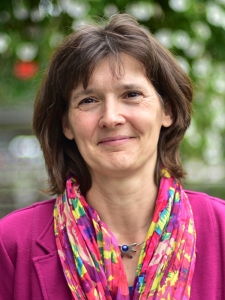News
The transition to online education: ‘I refuse to just copy-paste’
 Most of our educational activities will continue to be provided online, even after the summer holidays. The Master’s course Trends in Science Education & Communication is no exception. In June, lecturer Liesbeth de Bakker attended the ‘(Re)design your teaching in times of corona’ course, offered by Educational Consultancy & Professional Development and Educate-it, to facilitate the transition to teaching online. “I could have just copy-pasted everything from the normal course, and the students probably would have learned the basics. But there is no honour in that. I want us to feel like we’ve been through something together and learned something by the end of the course.”
Most of our educational activities will continue to be provided online, even after the summer holidays. The Master’s course Trends in Science Education & Communication is no exception. In June, lecturer Liesbeth de Bakker attended the ‘(Re)design your teaching in times of corona’ course, offered by Educational Consultancy & Professional Development and Educate-it, to facilitate the transition to teaching online. “I could have just copy-pasted everything from the normal course, and the students probably would have learned the basics. But there is no honour in that. I want us to feel like we’ve been through something together and learned something by the end of the course.”
Dishes
During the course, De Bakker learned how to make her course more interactive, to keep the students from tuning out. It starts with the introduction round in the first week. “Try to imagine 20 students all having two minutes to introduce themselves. Before you know it, it’s 40 minutes later, and half of them will be off washing the dishes”, De Bakker illustrates. “Now, we have them make short videos that they all have to watch beforehand. It’s much more dynamic and interesting.”
Too nice
Around 20 students have enrolled in the course. Most of them don’t know each other, but they will be expected to provide peer feedback throughout the course. That will be an even bigger challenge online, De Bakker predicts. “If you want students to say what they really think, then they need to have had social contact first. Otherwise, you’ll either end up with hurtful comments, or they’ll stay too nice and there won’t be any learning effect. In face-to-face classes, that contact occurs automatically. Students walk to class together, or they talk to each other during the breaks. There aren’t near as many opportunities for social contact online, so you have to facilitate it yourself and build it up gradually.”
The secret
De Bakker’s course consists mainly of conducting discussions on specific topics. So how can you ensure that students participate in a discussion via MS Teams? The secret is in the preparation, as De Bakker has learned. “Students read the literature in advance and answer key questions via a platform where you can make the articles interactive. That way, I know exactly what problems the students have encountered before the seminar begins. So you can really focus your efforts.”
Deep processing of the material
De Bakker is almost finished re-designing her course. She is currently dotting the ‘i’s together with several student assistants. She will continue to use some of the new elements of the course, even after USP is completely re-opened for on-location education. De Bakker: “These changes create space for a deeper processing of the material, and that’s what I want to achieve as a lecturer. The coronavirus pandemic, and the resulting transition online, have forced us to think about how to achieve that, and to invest time in doing so.”
Take part in the module ‘(Re)design your teaching in times of corona’ in August or September.

